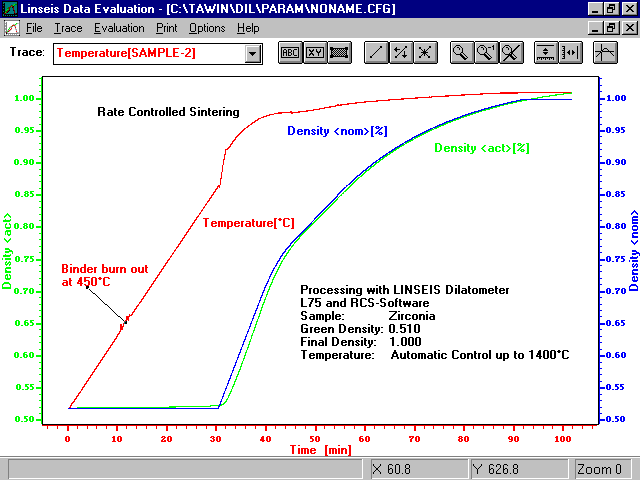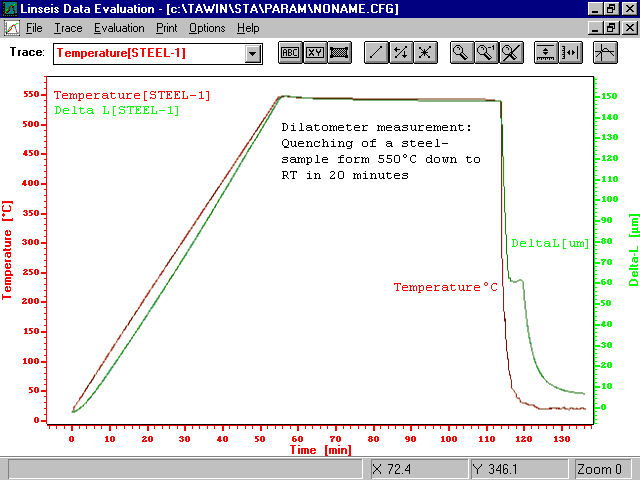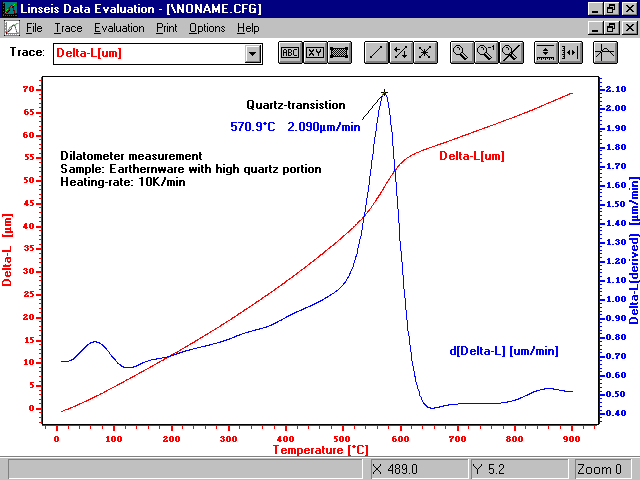
In production processes of high-tech ceramics (AI2O3) a simulation of sinter process's is of special interest. When using the optional software package RCS (rate controlled sintering) it is possible to program controlled sintering in the dilatometer as per the PALMOUR III theory.
Picture 4 shows the sintering process of ZrO2. Here the final density of 100 % is achieved. The initial heating rate decrease as the final density is reached.

Picture 5 shows a run with a steel sample that was cooled quickly with a quenching system from 550°C to room temperature over 20 minutes. At about 220°C a subtle phase change can be seen. This kind of measurement is used to draw ZTU diagrams.

Picture 6 shows a measurement of a clay sample with a dilatometer. This sample shows a subtle change of expansion at 570°C which comes from a alpha/beta change of the quartz crystal structure. This type of dilatometer measurement is important for the quality control in the porcelain and stoneware industry. This method will quickly determine the quality of raw materials used for the production of whitewares.
Dilatometer Measuring Systems |
Dilatometer Furnace Programs |
Dilatometer Software
Information: info@linseis.com
Webmaster: BRT